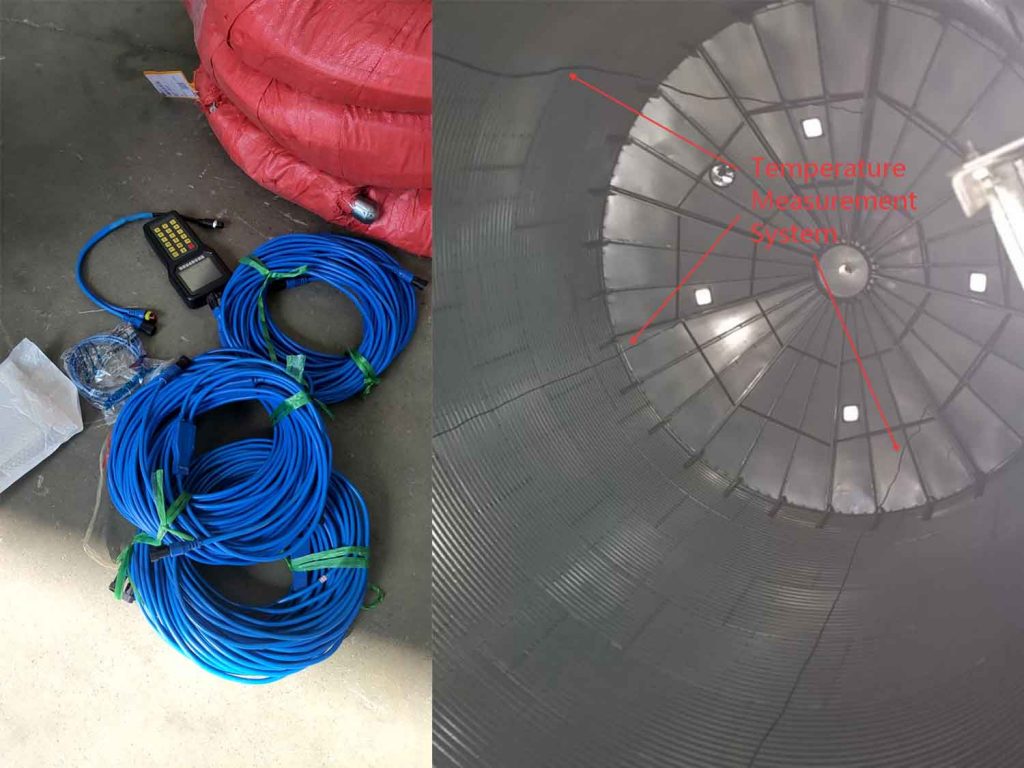In grain storage management, commissioning the grain silo temperature measurement system is crucial for its normal operation and precise monitoring of grain - pile temperature. Thorough commissioning can maximize the system's efficiency.

Pre - Commissioning Preparation
Comprehensive Hardware Inspection
Ensure that temperature sensors, cables, the host, sub - machines, and other components are undamaged after transportation and installation. Check the sensors for any cracks or deformities. Inspect the cables for any damage to the outer sheath and ensure connections are secure.
System Configuration Verification
Verify that sensor parameters such as range, accuracy, and resolution meet grain silo temperature - measurement requirements. Confirm that the host's settings for the number of measurement points, communication protocol, and data - storage capacity are correct. Adjust any incorrect configuration parameters promptly to ensure the system operates normally.
Sensor Calibration
Prepare Calibration Equipment
Sensor calibration is a key part of commissioning the grain silo temperature measurement system. Prepare high - precision temperature standards, such as constant - temperature water baths and ice - water mixtures. Also, have calibration tools like standard thermometers and multimeters ready.
Calibrate Sensors Point - by - Point
Place each temperature sensor into the temperature standard one by one. Once the temperature stabilizes, use the calibration tools to measure the sensor's output value and compare it with the standard's temperature value. Adjust the sensor's calibration parameters based on the comparison to align the sensor's readings with the standard's temperature value.
System Function Testing
Data Acquisition and Transmission Testing
Observe the temperature data on the host's display screen to ensure it updates in real - time and is stable and accurate. Also, check the system's data - transmission stability under different communication distances and environmental conditions to ensure error - free and loss - free data transmission.
Alarm Function Testing
Set different temperature alarm thresholds and simulate abnormal temperature increases or decreases in the grain pile. Check if the system's alarm function works properly. When the temperature exceeds the set alarm threshold, the host should promptly trigger an audio - visual alarm signal.
System Interlocking Testing
Interlocking with Ventilation Equipment
During commissioning, simulate a temperature increase in the grain pile to the set temperature for ventilation equipment activation. Check if the ventilation equipment starts automatically for cooling. When the temperature drops below the set value, the ventilation equipment should stop automatically. Conduct multiple tests to ensure accurate and reliable interlocking between the system and ventilation equipment.
Interlocking with Other Equipment
Simulate various temperature conditions to check if the system can interlock with other equipment. For example, in high - temperature environments, check if the system can automatically start the air - conditioning system for cooling. In low - temperature environments, check if it can automatically turn off the air - conditioning to prevent grain from freezing.